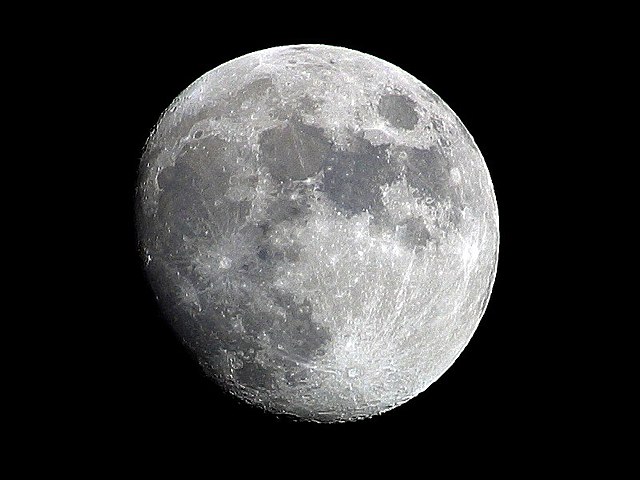 What Time Is It on the Moon? Credit: OldakQuill / Wikimedia Commons / Public Domain
What Time Is It on the Moon? Credit: OldakQuill / Wikimedia Commons / Public DomainAs space agencies and private companies prepare for increased lunar exploration, including the establishment of permanent bases on the Moon, scientists are working to answer a fundamental question: What time is it on the Moon?
According to the journal Nature, each lunar mission currently utilizes its own timescale linked to coordinated universal time (UTC)—previously known as Greenwich Mean Time (GMT)—on Earth, but this method is relatively imprecise and does not synchronize the time between multiple crafts working in unison.
The need for a uniform time system on the Moon is becoming increasingly pressing as plans for a dedicated global navigation satellite system (GNSS) for the Moon, similar to GPS on Earth, are being developed.
Tracking satellites on the Moon
This GNSS system, similar to GPS on Earth, is crucial for tracking the location of multiple spacecrafts working together on the lunar surface.
Space agencies plan to install the lunar GNSS around the year 2030, with the European Space Agency (ESA) approving a project called Moonlight and NASA establishing a similar project called Lunar Communications Relay and Navigation Systems.
In the past, Moon missions have relied on radio signals sent to large antennas on Earth to pinpoint their locations. However, with dozens of missions planned in the coming years, this method will be insufficient.
As Joel Parker, an engineer working on lunar navigation at the Goddard Center, points out, “There…[are] just not enough resources to cover everybody.” A precise timekeeping system will be necessary for successful coordination and communication among the multiple spacecrafts working on the lunar surface.
Characterizing lunar time
"The lunar GNSS projects plan to place dedicated satellites around the Moon, each containing their own atomic clock. A receiver, for example on the Moon’s surface, will then triangulate its position using the time it takes for satellite signals to reach it." #NASA #ESA #Africa pic.twitter.com/JYPnhFvMMa
— BĐ 🇲🇿 (@brunodiasmz) January 25, 2023
Defining a uniform time system for the Moon is not a simple task, however. While the definition of a second is the same everywhere, the theory of relativity states that clocks tick more slowly in stronger gravitational fields.
The Moon’s gravitational pull is weaker than that of Earth. This means that, to an observer on Earth, a lunar clock would run faster than one on our planet. According to aerospace engineer Cheryl Gramling, a lunar clock would in fact gain about fifty-six microseconds over twenty-four hours.
Additionally, the speed of a clock on the lunar surface would vary depending on its precise position on the Moon’s surface. This is due to the rotation of the Moon, says Patrizia Tavella, who leads the time department at the International Bureau of Weights and Measures.
To determine the lunar standard, at least three master clocks that tick according to the Moon’s natural pace would have to be installed. The output of these clocks would then be utilized so as to generate a more accurate ‘virtual’ timepiece using an applicable algorithm. This process would be challenging, as it would involve taking into account various factors, such as the Moon’s rotation and gravitational field.
Options for lunar timekeeping
Experts are now faced with the task of defining a universal lunar time that can accurately track the location and communication of multiple spacecrafts. One approach would be to base lunar time on UTC, which would involve regularly synchronizing virtual lunar time with terrestrial UTC. This approach would be the most simple one for users on Earth to understand and interact with.
Alternatively, a unique, continuous time using the synthesized output of lunar atomic clocks could be established for the Moon. This way, even if the connection with Earth were to be lost, clocks on the Moon would still agree with each other and allow for safe navigation and communication.
This model could also be applied to other distant planets, such as Mars, that space agencies plan to target even further in the future. Such an approach would allow for more autonomy and flexibility in timekeeping on the lunar surface.
First, however, experts must determine how days on the Moon will be defined. This could be based on the length of time between either two noons or sunsets. In this case, a single day on the moon would last for an average of 29.5 days.
Of course, something entirely different could also be used. Nonetheless, regardless of the approach chosen, the definition of days on the Moon must be agreed upon to ensure accurate timekeeping and communication among multiple spacecrafts.

 1 year ago
80
1 year ago
80











 English (US)
English (US)